January 29, 2020 | Sandy Giardi
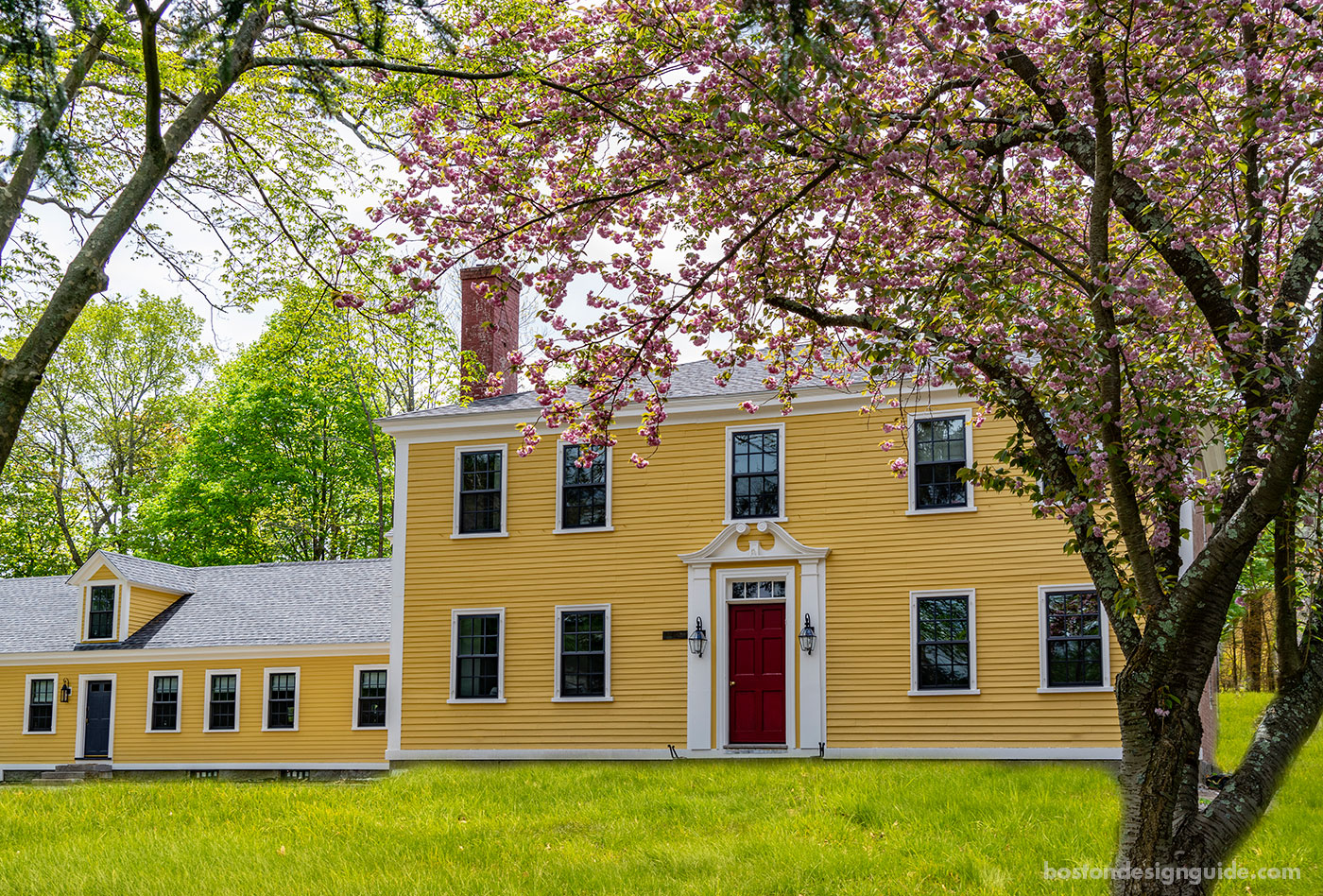
With the help of Cummings Architects, the town of Lynnfield, and a longtime resident, Federal Era charm lives on in its downtown center, with the preservation of the 1785 Reverend John Mottey House. Despite this happy story of a community coming together, there was a point in time where this might not have been the case. When the neglected seven-acre property, also known as Centre Farm, came up for sale, it was at risk of falling into the hands of developers, who would surely raze a large part of the historic building and subdivide the lots for redevelopment. To circumvent this fate, the town of Lynnfield stepped in to purchase the property. Once they secured the property, they then did not know what to do with it. Since it was originally designed as a residence, it didn’t translate well into a school, library, or even a historic society as any repurposing would “diminish the historic quality of the home,” as explained by Principal Architect, Mathew Cummings.
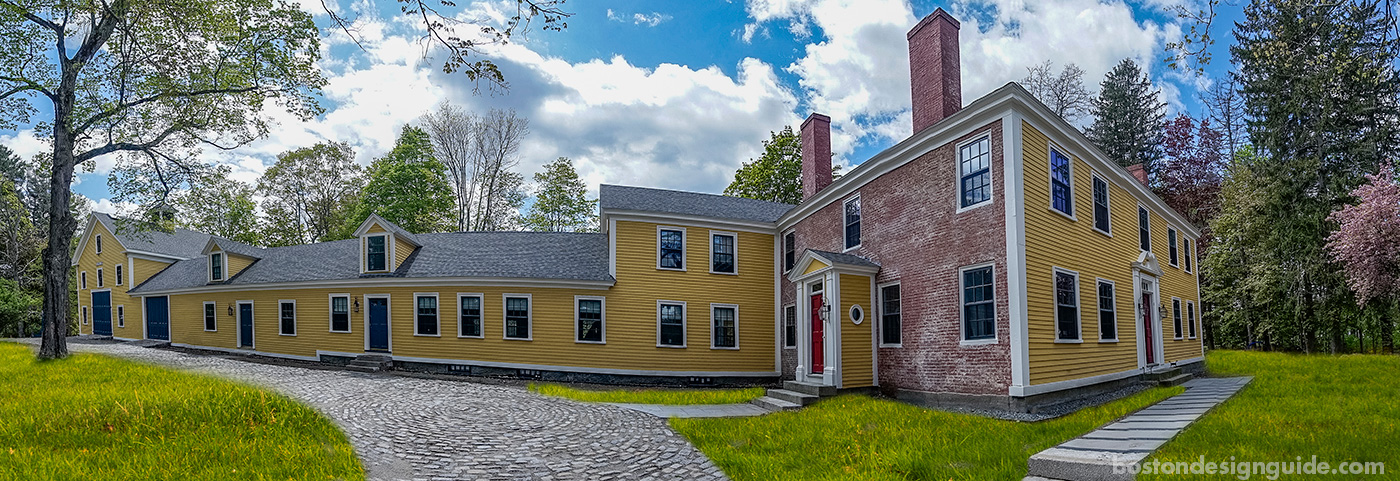
Ultimately, it was put to a town vote to sell the property in the hopes of saving it. The town was careful to include a deed restriction outlining what could and couldn’t be done to the home’s exterior to preserve its integrity. When a family who had lived in the town for years expressed an interest in restoring the previously abandoned property, he won the bid. The family hired Cummings Architects, a firm with a wealth of experience with historic renovations, to be the architect for the project. Before doing any design work, Cummings Architects delved into the written history of the home, scrutinizing the construct and the timeline of its layers and additions, which, in the case of Centre Farm, includes the main house, a barn and an L-connector, linking the two structures. Working closely with the builder of the project, Kaminski Construction Management, they also documented the condition of the framing, exterior siding, and interior finishes.
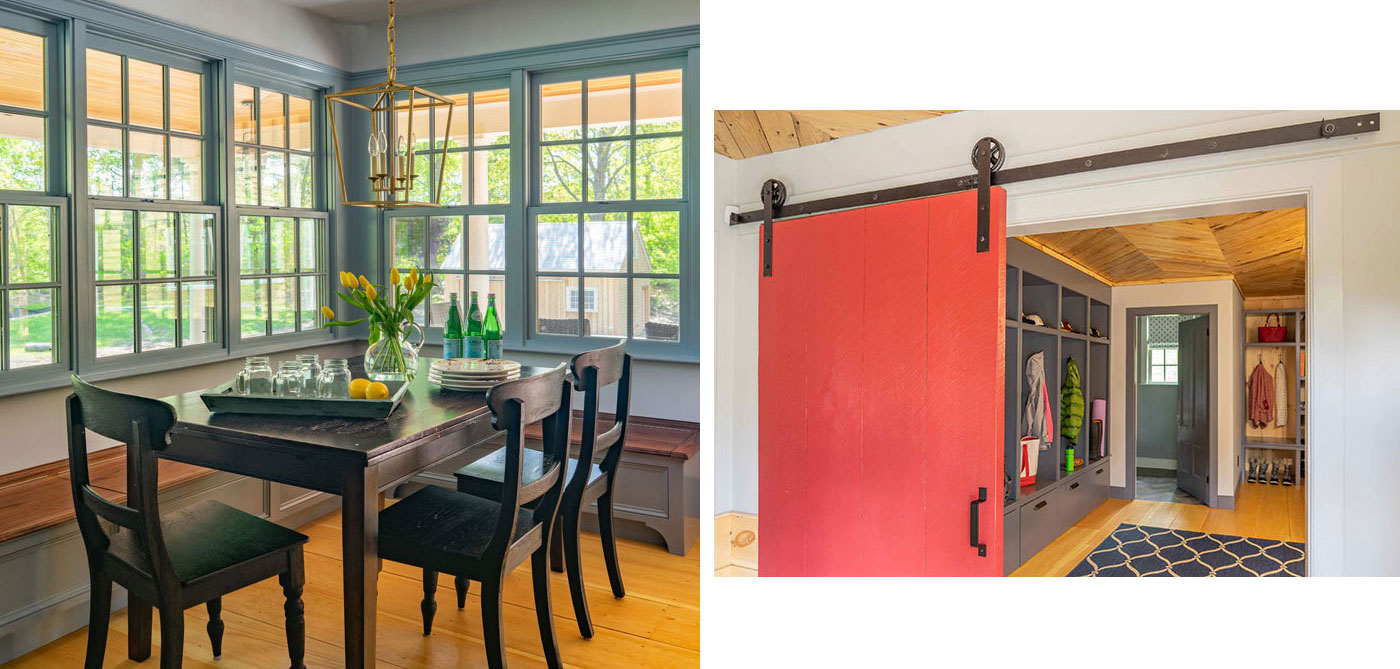
Often, owners of historic homes are under the impression that a true renovation will return their residence to its original state. They are worried that they will forgo modern conveniences and live in a museum. Cummings Architects strives to weave in present-day amenities and the features homeowners would like to have, all the while heeding the history of the structure itself. Finding that intersection—that perfect balance where the character of the period house meets the client’s wish list—is what makes a project like Centre Farm so compelling.
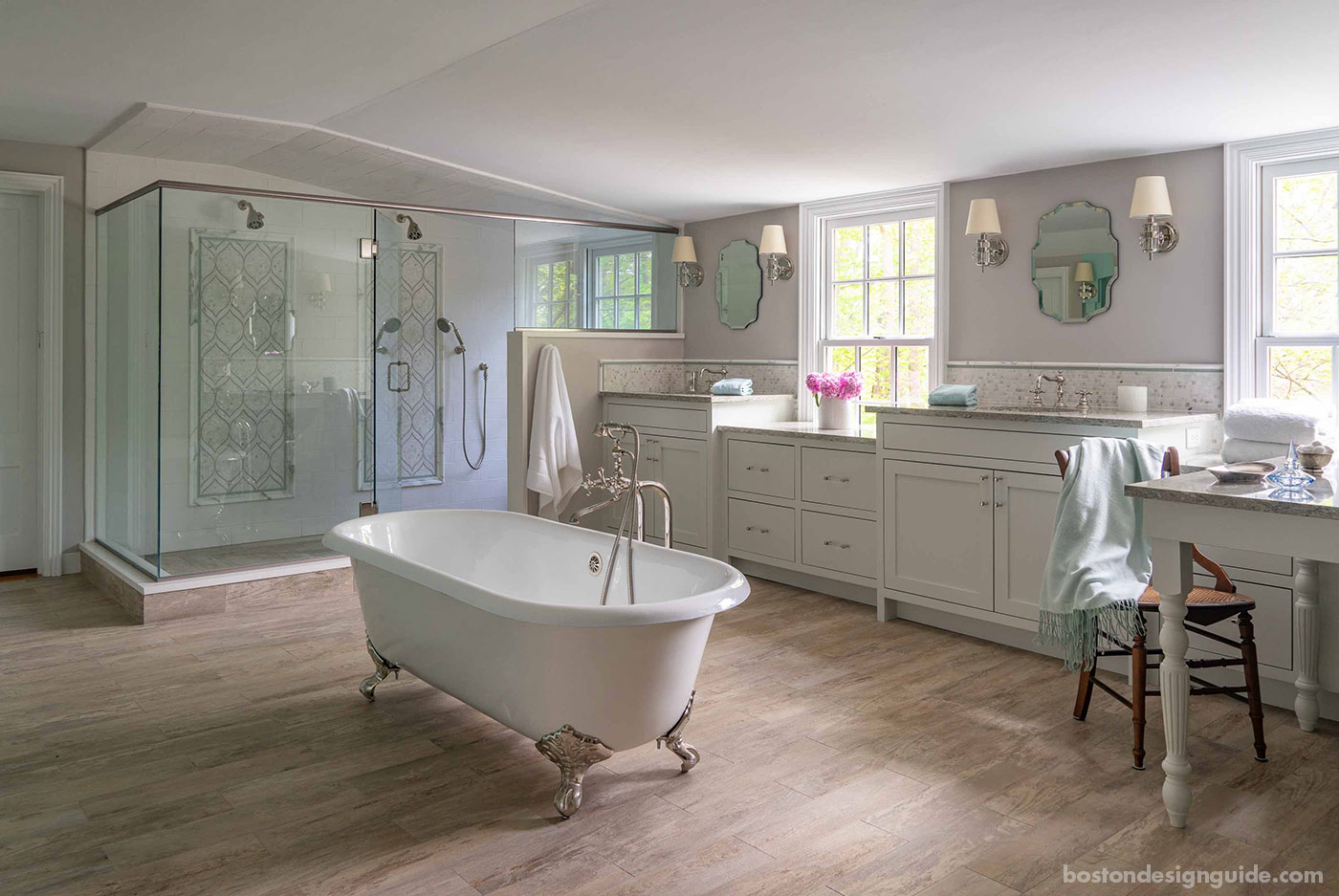
A well-thought-out design for modern living within the existing structure, and out-of-the-box ideas that seamlessly interlace the new elements with the old, were created. There were many easier-to-solve concerns like where to add closets, built-ins, and the master bathroom, but there were also plenty of design riddles. One of which dealt with the 76 doors in the home, where they should be relocated, and how to pair the authentic hardware? These are challenges that Cummings loves in a project, “You’re presented with something that’s close to impossible. It makes it a lot harder, but it’s fun.”
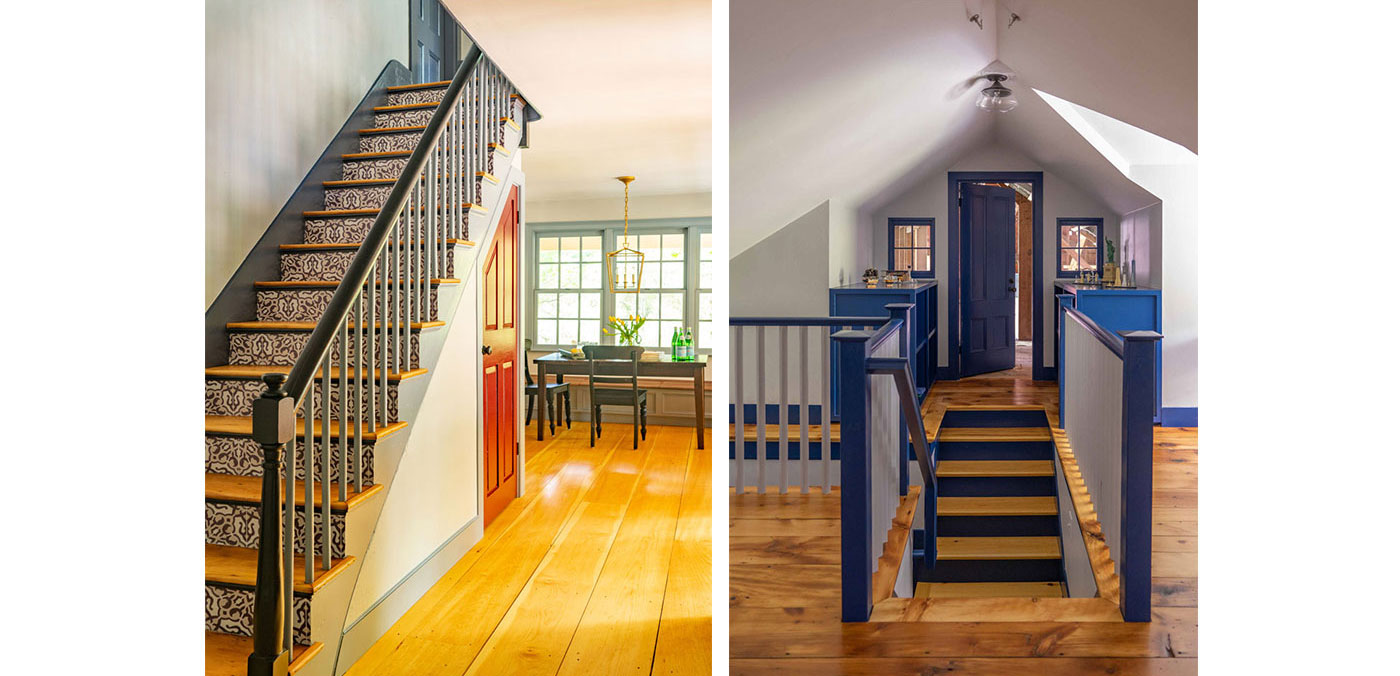
For the new, more modernized features the design team made good use of the L-connector. This area of the home didn’t have a historic fabric to speak of since it had been ripped out in the 1950s. The space lent itself to the of-the-moment updates. “Originally those rooms were very closed off,” explains interior designer Alexandra Ford of Cummings Architects. “As the family has four young children, it was important for them to have a space that is open, a place for the kids to hang out and do homework, as well as entertain.” This space ended up being the new home for a mudroom, and a farmhouse-style kitchen that opens to a living room on one side with a sunny, glassed breakfast room on the other.
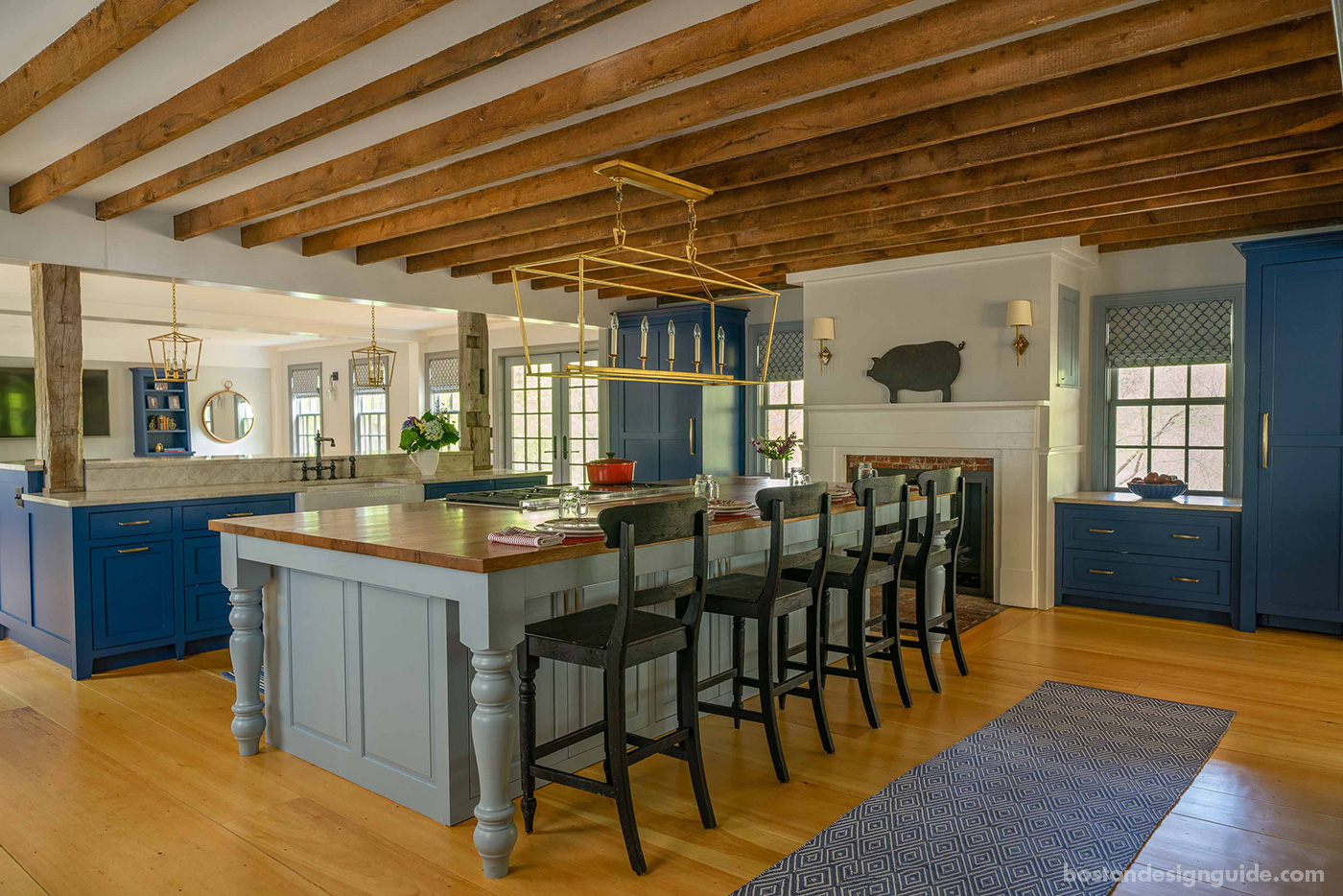
For its part, the main house, which had been neglected for some time, was restored “in a very respectful way to the history, but that was still modern and would work well for the young family.” The firm considered details great and small, preserving the timber frame, restoring the posts and the interior window shutters, and swapping out non-historic replacement sashes for new, authentic wood windows. In many areas modern red oak flooring had been added as part of an earlier renovation. This was removed for more historically-appropriate 22-inch pine floorboards secured with T-head nails. The original trim was saved where possible, and, when it couldn’t be salvaged, special knives were sourced to replicate the exact profile of the moldings. The team also spent an inordinate amount of time on the home’s authentic hardware, whether relocating, restoring or sourcing box locks.
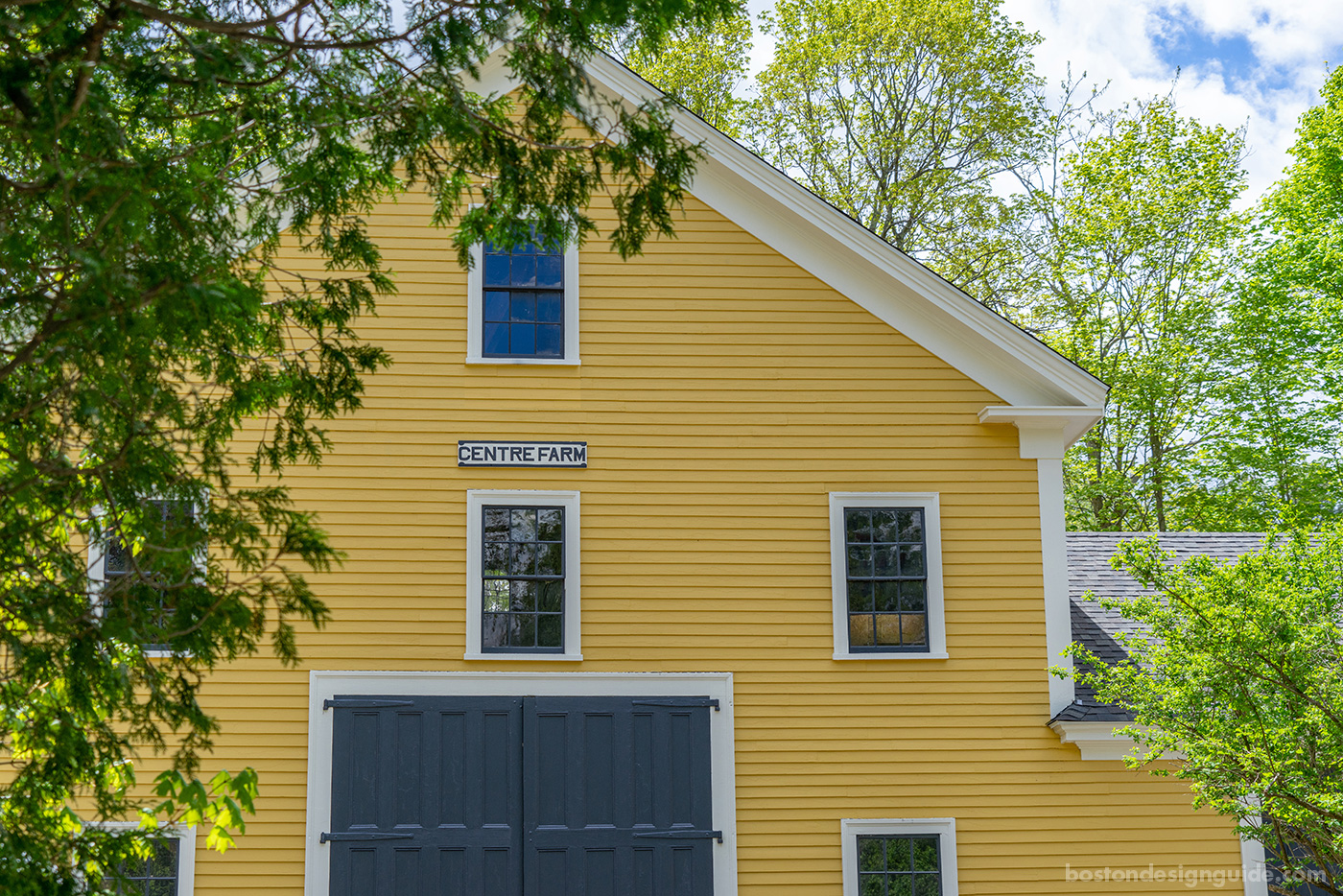
The clients were open-minded and, like Cummings Architects, prize authenticity. It is for this reason that handwork, like the horsehair plaster and hand-planed trim (some of which is mortise and tenon) was intentionally left intact. “We don’t ‘fix’ everything,” says Cummings. “We leave a lot of things in the character they’re in, and it tells the story of the house.”

A gracious wraparound porch added to the rear of the home was designed to pay homage to those found on homes of the era. Overlooking the generous backyard and a few steps away from a new pool and pool house, the open-air setting gives the home a certain grandeur, as well as being a popular place for family and friends to congregate.
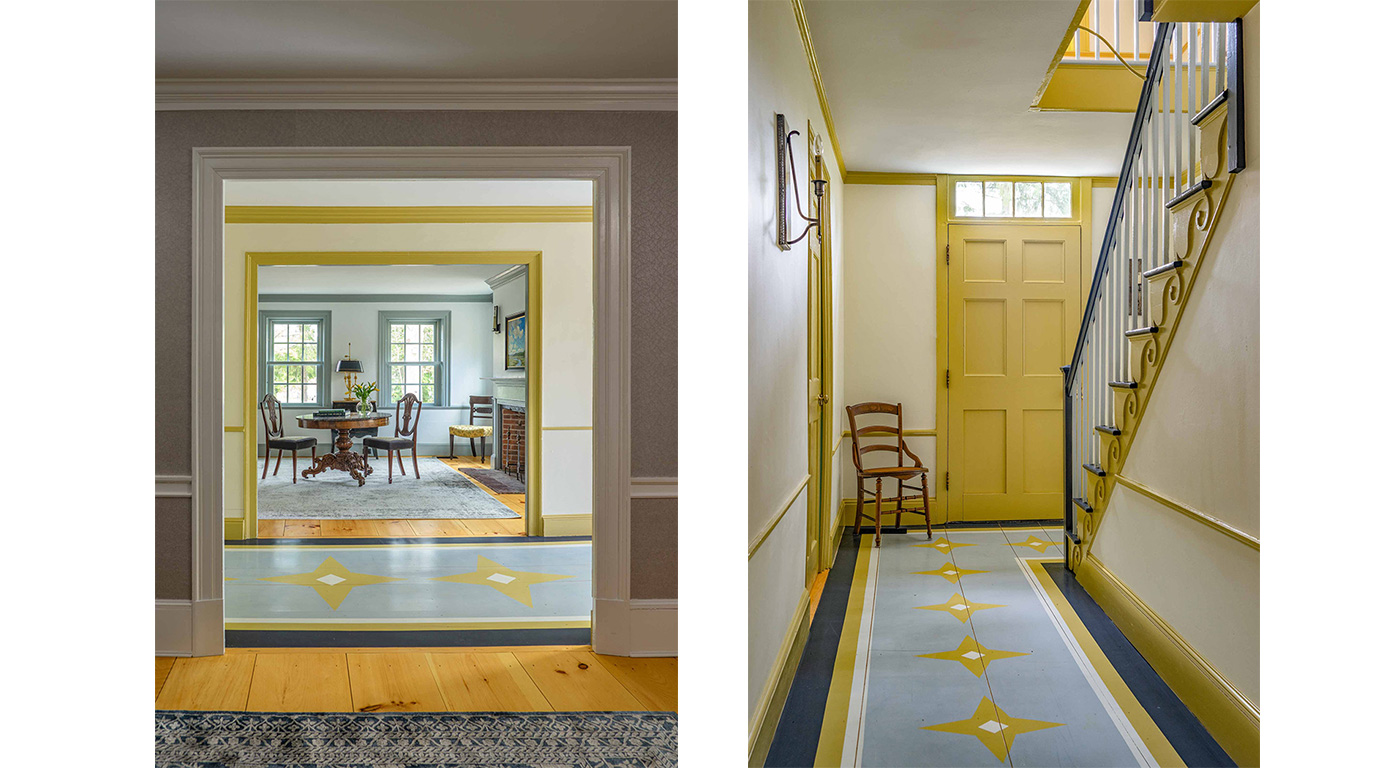
To create the home’s stately yet vibrant palette, Ford studied—and channeled—historically accurate paint and trim colors. A lively citron, offset by classic blue, greets all who enter in the main entry and stair hall. The subtly-tweaked tone is reminiscent of the original, while a bird’s-egg hue adorns the parlor. Shades of blue, a favorite color of the client, are woven throughout the home, and celebrated with a spectrum that ranges from powdery gray-blues to statement-making royals.
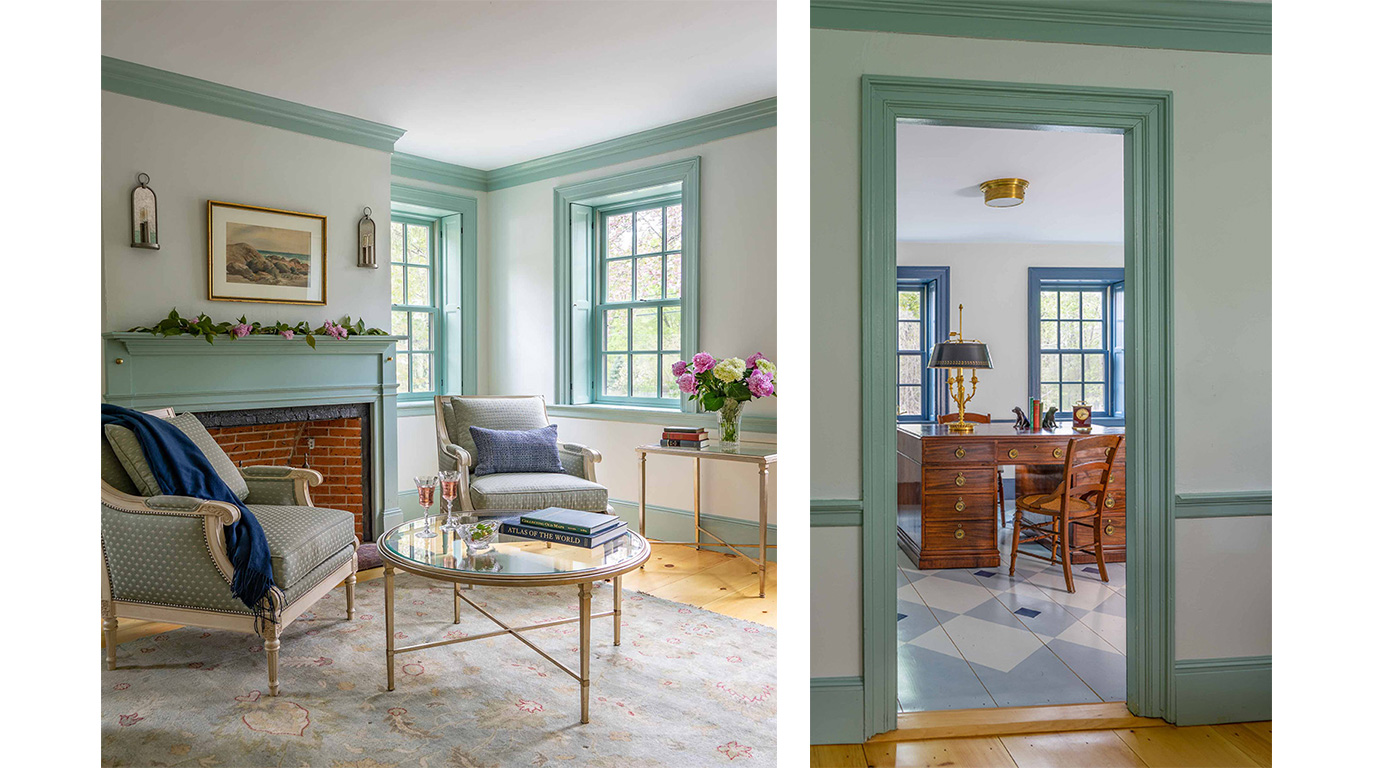
Ford also researched stencil patterns accurate to the time that were hand painted on the walls of the front vestibule, and on the floors in key rooms. The stencil work, a glorious Federal-period throwback, graces “the older spaces that were a bit more formal,” she explains, eliminating the need for wallpaper, and adding beauty as well as interest.
The end result is a wonderful family home that harkens back to the grandeur of its history, but is warm and inviting for generations to come.
Images by Eric Roth Photography


Add new comment